KJIPUKTUK (Halifax) – The United Nations Road Safety Week (17 to 23 May 2021) highlights why vulnerable road users disproportionately account for road traffic fatalities and injuries and what changes must happen to ensure their safety requirements are supported.
The template email below using United Nations promotional materials is for you to adapt and use. It has been developed by me (Martyn Williams) with some kind direction from the United Nations (North America) office of the FIA Foundation.
For decades, vulnerable road users have been a secondary priority to moving vehicles, often an afterthought. That must change, says the World Health Organisation.
Vulnerable road users are the catalyst that enable urban and suburban residents to move efficiently – maximizing best use of limited resources, space and time. Cities that prioritize the movement of people over cars truly benefit in all respects.
Please make best use of this template by adding your own experiences and concerns. Explain where your safety is compromised and how, and what additional action you would like taken to make your journeys safer. You can also access this email template from this Google Document.
Then please send your completed email to your councillor, requesting a response.
Dear Councillor,
Please act to support this year’s “Streets for Life” United Nations Road Safety Week
I am writing to request you act to improve safety for vulnerable road users where it is required the most.
From the World Health Organisation’s press release:
“The 6th UN Global Road Safety Week is calling on policymakers to act for low speed streets worldwide, limiting speeds to 30 km/h where people walk, live and play. Join the #Love30 campaign to call for 30 km/h speed limits to be the norm for cities, towns and villages worldwide.”
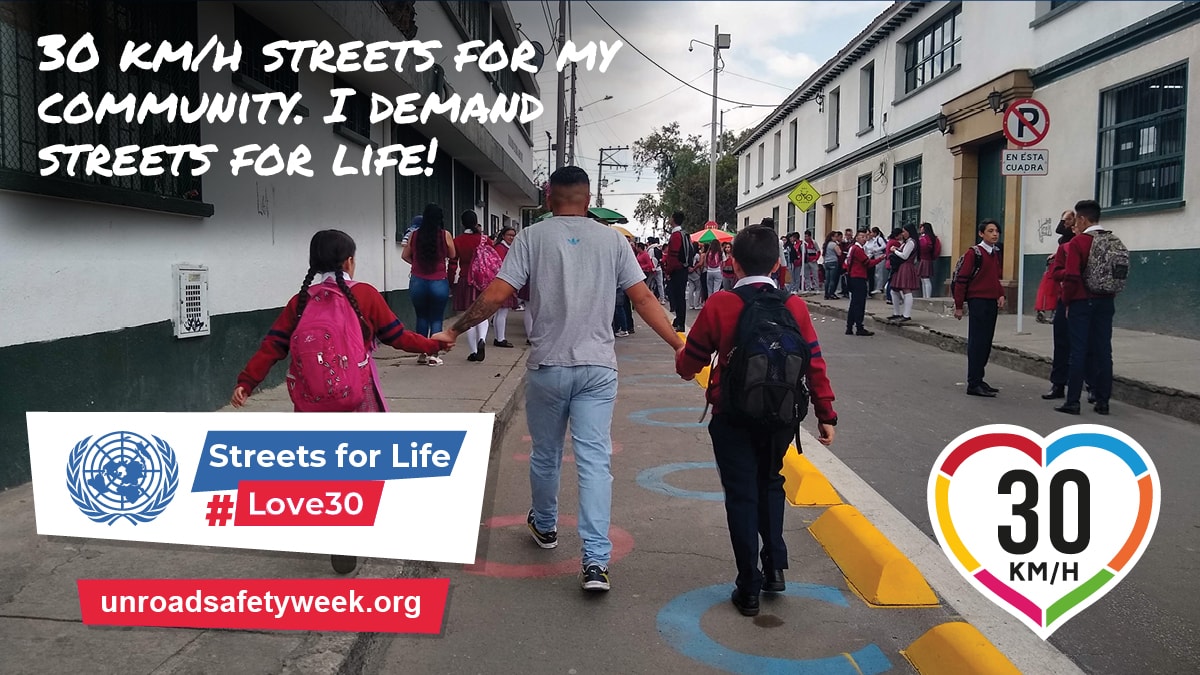
This has been achieved by Lockeport, Nova Scotia and by international cities.
There are many myths and prejudices relating to this essential requirement for a liveable, safe and sustainable city. I hope these misconceptions about lowering speeds do not prevent you from openly supporting this year’s United Nations campaign.
I understand lower speed limits must be approved by the Province, who would examine if any current or planned adaptations make the roads suited to lower speed limits. Achieving this will require reconsideration as to how we most effectively use road space, utilising inexpensive toolkit road diet alterations, collaborating constructively with the Province and implementing strategic action plans.
I agree with this United Nations campaign to provide safe streets that support people and the planet. I urge you to propose a strategy for 30 km/h speeds on all roads where people and traffic mix.
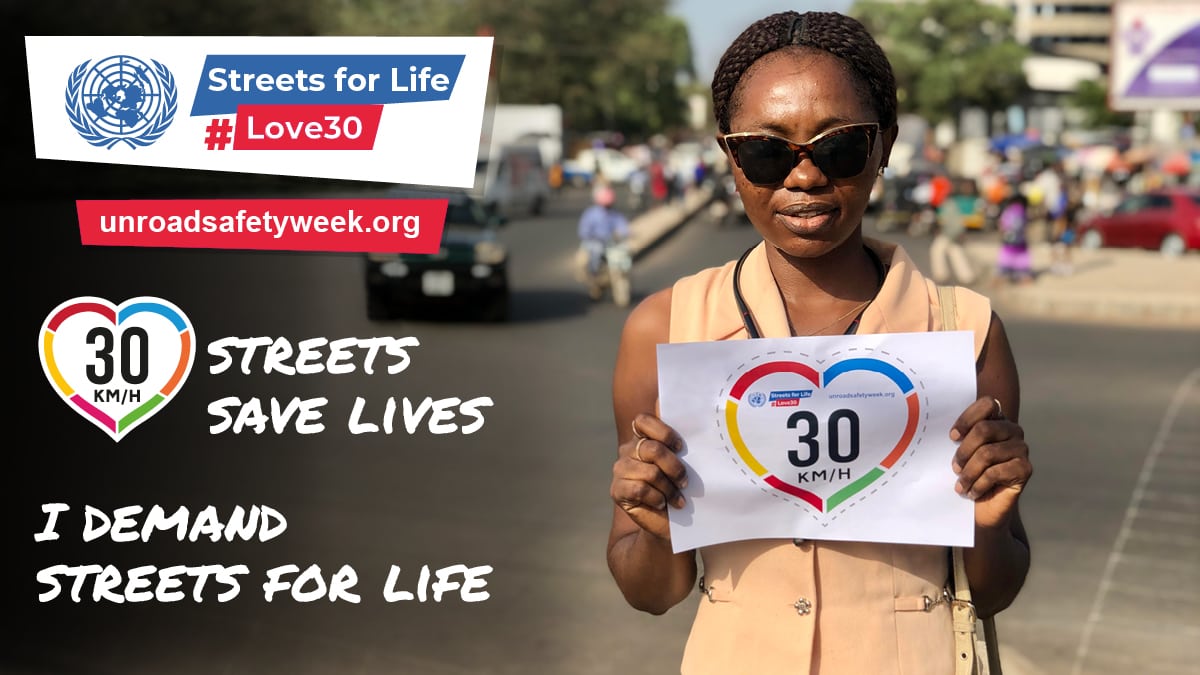
As my councillor I also call upon you to publicly support the following essential requirements to progress safety where it matters the most; in particular at crosswalks, which from the most recent annual statistics available accounted for almost two-thirds of pedestrian incidents over 2018 and 2019. Over 2020 and 2021, I understand crosswalks were the location of all pedestrian fatalities.
Some of these requests relate to actions within the councillor approved Road Safety Framework. Relevant page numbers are referenced below.
- Request the immediate development of the pedestrian safety action plan.
The Road Safety Framework was never intended as a stand-alone complete plan:
“The development of action plans will be an ongoing process to ensure the effectiveness of specific actions in collision reduction in HRM.” (page 14)
This critical pedestrian safety action plan has not yet been developed, as confirmed recently by staff:
“Develop action plan for worst 10 types of (pedestrian) collisions. Consider rates/frequencies, consistency of collision patterns and crosswalk specific assessments.” – Attachment D, Future Countermeasures, page 6 of 8
This plan must be developed in conjunction with people who rely upon walking or disability mobility aids as a primary means of transport, especially those who have physical and learning disabilities:
“Working with different communities, understanding their needs and facilitating open communications is critical to inclusive outreach programs.” (page 14)
It must consider and prioritise the safety needs of our most vulnerable road users, including children – not just around schools but along routes they use to get to and from schools and outdoor parks:
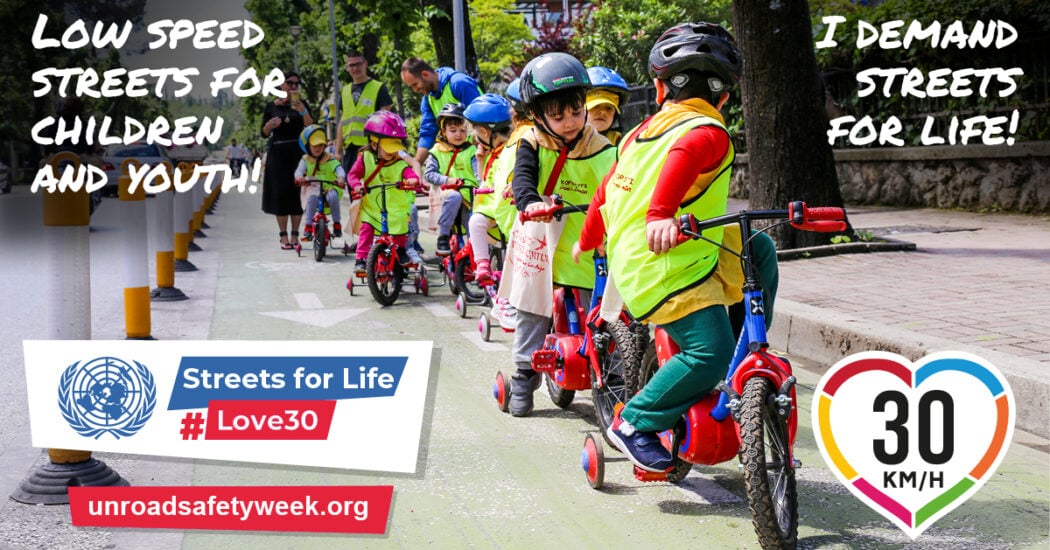
A pedestrian safety action plan could identify key safety issues and urgent intervention priorities – including:
- Assessing safety at multiple-lane crosswalks with overhead amber flashing lights (RA-5) and signalized intersection crosswalks with no pedestrian safety infrastructure;
- are they safe to use for people of all ages and abilities?
- how could safety be improved?
- how can public safety concerns be addressed through known engineering interventions and/or road space reallocation?
- Reducing the number of traffic lanes that a pedestrian can realistically cross safely without a break in traffic lanes by way of a refuge island,
- Ensuring essential, not optional, infrastructure is in place that;
- slows down drivers as they approach crosswalks to speeds compatible with vulnerable road user safety.
- ensures drivers can see pedestrians crossing or about to cross, using advance yield signage and markings.
- Acknowledge staff must work with community stakeholders (not just inform or impart information provided on request) when developing the action plans mentioned in the road safety framework strategy.
Action and collaboration through working with stakeholders in the community, as identified in the road safety framework:
“Facilitating collaboration with other road safety stakeholders is the most important function of this Plan. Working together achieves better outcomes, uses resources efficiently and builds upon different organizational strengths. This collaborative effort is more effective than stand-alone initiatives, because it focuses resources towards common objectives and avoids redundant, duplicate or inefficient programs.” (page 6, own emphasis added)
- Propose an independent safety audit.
Severe and fatal incidents have recently occured on crosswalks which lack pedestrian safety infrastructure at Young/Kempt and on Herring Cove Road. I request an independent audit assessing the adequacy of HRM’s pedestrian infrastructure, per this recommendation by the Federal Highways Agency.
Given the cost to human lives, action on crosswalk safety must be pre-emptive and led by safety assessments.
- Propose a policy for traffic controls that prioritize pedestrian safety.
The prioritisation of pedestrian safety through road-class appropriate infrastructure at crosswalks is the priority, not traffic flow:
“Vulnerable road user safety must be prioritized over vehicle movement in the selection of traffic control devices” – the Institute of Transportation Engineers, 5 May 2021.
“if you’re asking whether TAC guidance suggests “prioritizing vulnerable road users” — then the answer to that would be yes. Clearly, a pedestrian is inherently less well protected than an automobile occupant, and warrants special treatments to compensate for risk.” – Transportation Association of Canada, 23 February 2021.
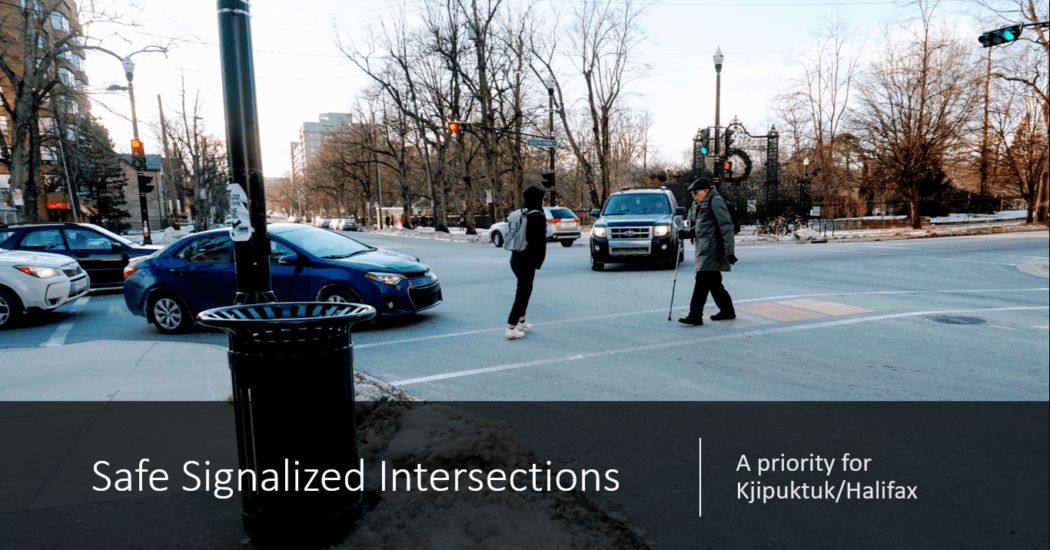
Two fatalities and a life threatening injury have occurred in a recent twelve month period due to traffic controls that invite conflict between vehicles and pedestrians and prioritise the movement of vehicles over pedestrian safety.
This follows an alarming long-term trend of disproportionately high numbers of pedestrian incidents at signalized intersections. Recent incident data analysis shows intersections continue to account for 72% of pedestrian and cyclist incidents:
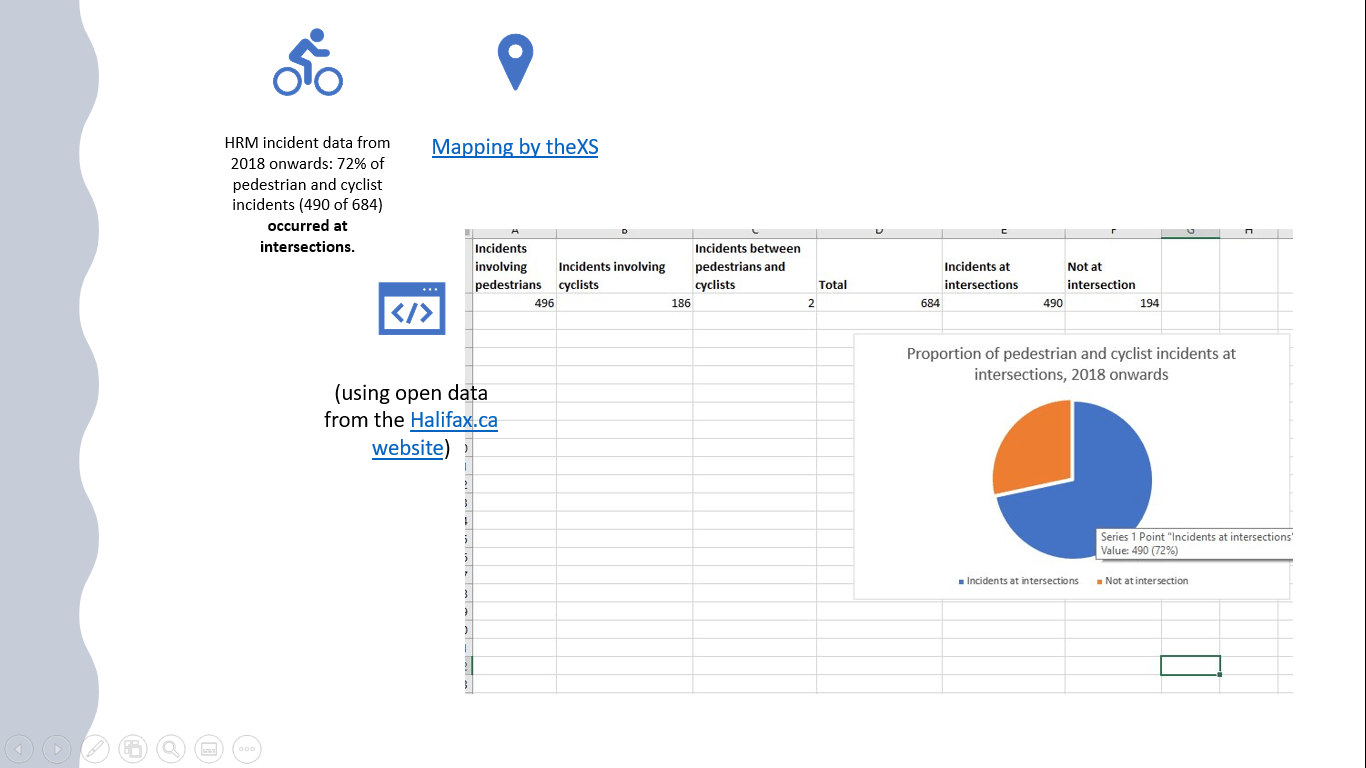
To prevent the statistically evidenced likelihood of numerous pedestrian incidents over the next 12 months caused by turning drivers at signalized intersections, I request changes to traffic lights by developing a municipal policy that requires vulnerable road user safety to be the priority for traffic controls at signalized intersections.
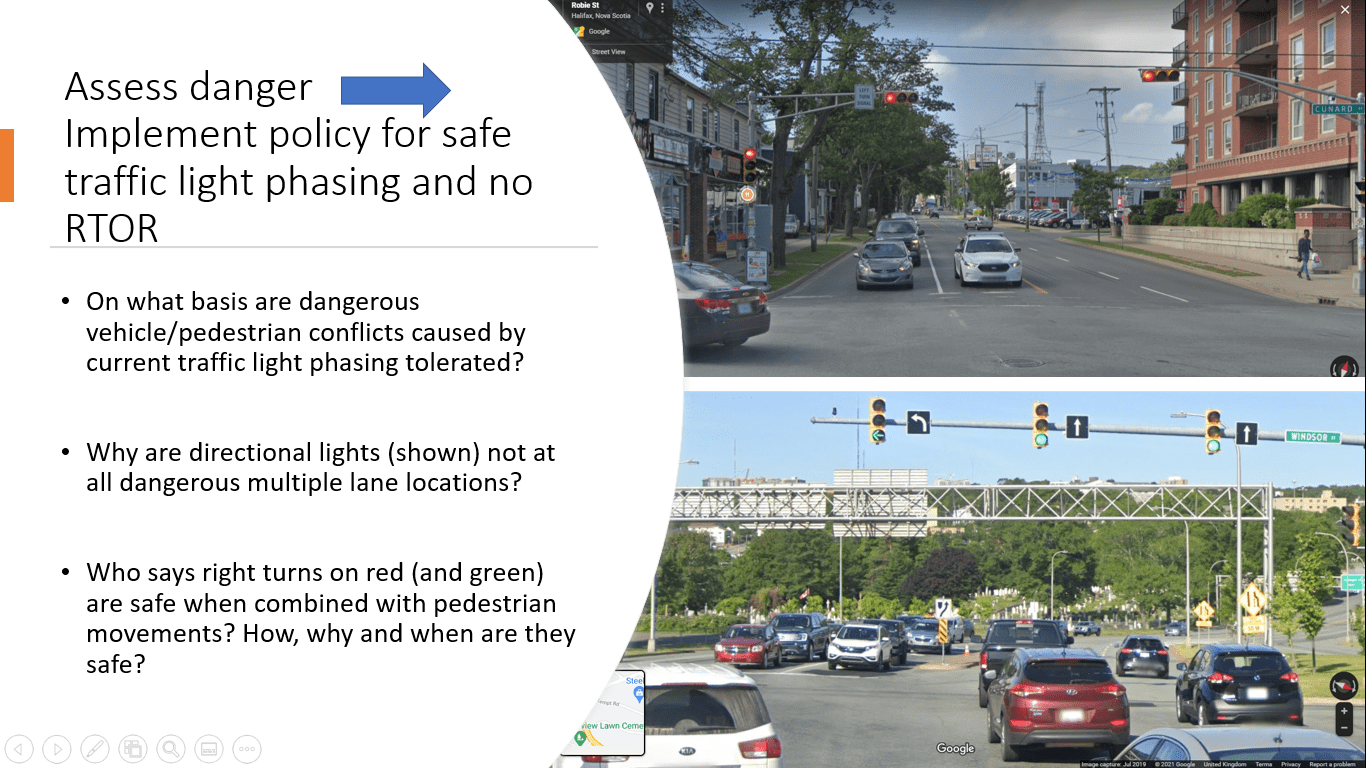
- Propose policy requiring the removal of right on red permissions.
Right turns on reds are dangerous for me and are not compatible with vulnerable road user safety.
I request the development of Municipal policy on right-on-red permissions that meets clear guidance from national transportation agencies including Transport Canada, the Canadian Council for Motor Transport Administrators and the United States Federal Highway Agency.
“Streets for Life” requires your public support!
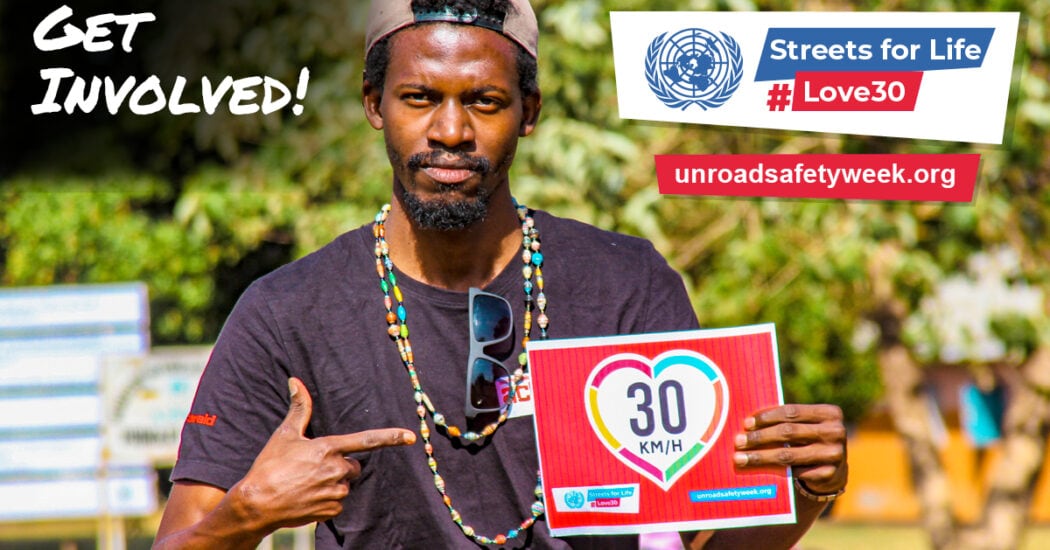
The eleven recent pedestrian fatalities within the Municipality were all senior in age.
Local resident and mother Sarah Richardson miscarried her twins after being struck while using a dangerous crosswalk on Herring Cove Road.
Prioritising vehicular traffic flow over vulnerable road user safety at crosswalks means seniors, children, pregnant women and people with injuries or disabilities will continue to be those most likely to be killed or injured.
Fatalities and incidents will also continue in the most dangerous locations where safety infrastructure for vulnerable road users is lacking or even (as for signalized intersections) often non-existent. These are not “accidents”, they are results:
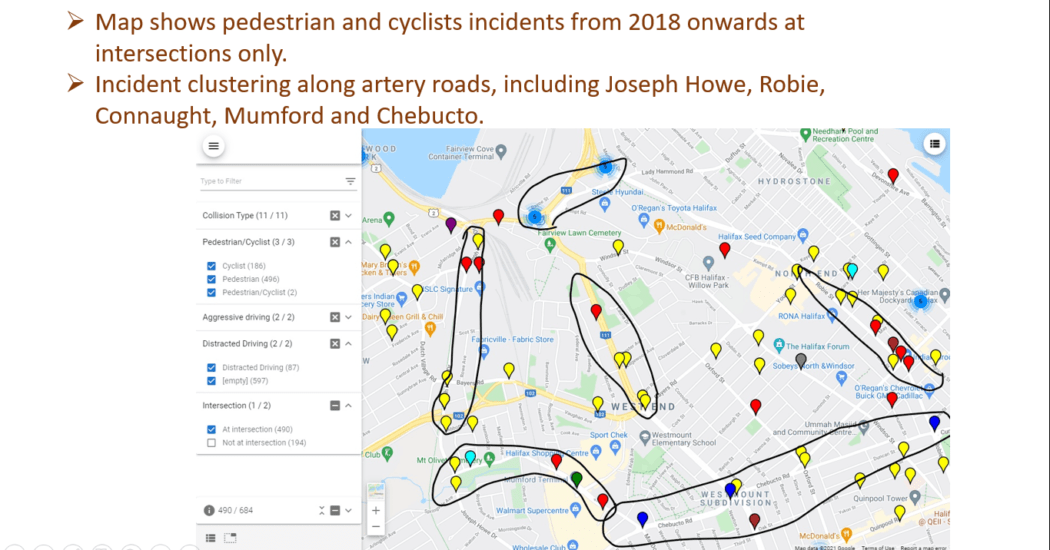
I ask for action prioritised and focused upon vulnerable road-user experience, involvement and incident data.
Identifying the above high injury network and the interventions required to prevent harm within the network, particularly at intersections, is critical to start the process of prioritizing safety where it is needed the most.
Moving large volumes of vehicular traffic through communities on multiple lane wider roads and intersections requires infrastructure which prioritises safety for vulnerable road users at all crosswalks and cycle routes, due to the increased danger presented by wider roads and higher traffic speeds.
I do not volunteer to endanger myself at locations where there is a desire to prioritise traffic flow and speed, nor do I accept that danger when using facilities specifically for pedestrians and cyclists is inevitable, essential for transportation efficacy or requires decades of expensive redesigns.
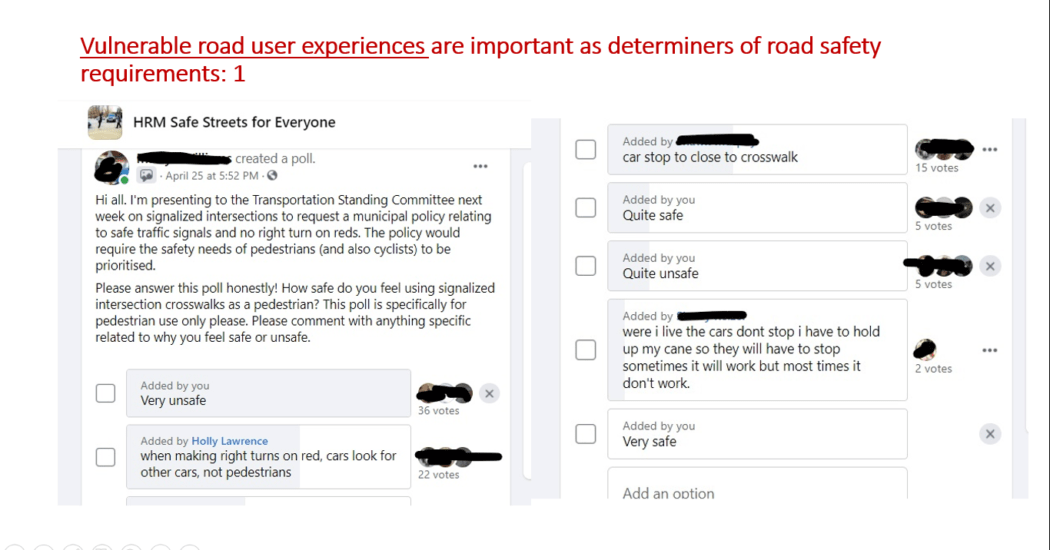
Infrastructure that adequately protects our most vulnerable road users at locations dedicated for their use is both my right and an immediate priority, not a long term ambition.
Please speak up during Road Safety Week
Please do not be silent during this United Nations Road Safety Week.
Speak out for vulnerable road user safety where it matters the most:
- On our fast and dangerous urban arterial roads and intersections.
- On community and downtown streets.
- For children making their way to school and back on foot or by bicycle.
Accompany children on their walk or cycle to school, or seniors on their walk or bus ride. Document the everyday dangers they face and share them. Explain how you will support action on safety for those most compromised by danger, and how.
Safe and traffic-calmed residential class streets are important, but please do not restrict your message to this issue.
Transportation efficacy and sustainability in communities relies upon and requires safe infrastructure for people who do not drive. Our local ferries and transit require a complementary safe walk, cycle or roll to and from transit stops and terminals.
Please acknowledge that the Municipality must do more and change its approach to protect those who most rely on safe infrastructure with urgent interventions like this, changing the outcome from predictable everyday incidents to safe travel for all:
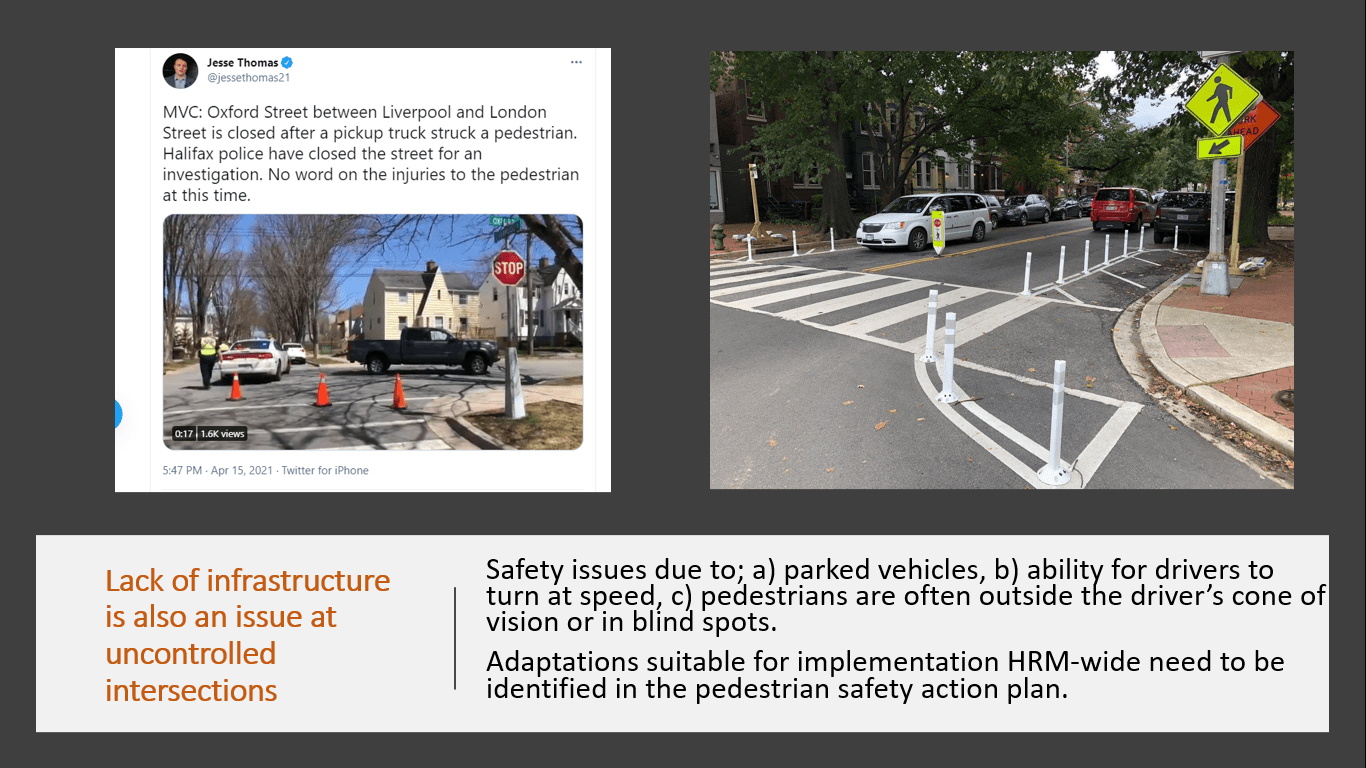
Everyone gains from infrastructure that adequately supports mobility for all irrespective of their chosen travel mode, disability and age.
Thank you for considering my Road Safety Week plea for action. I look forward to receiving confirmation of your support.
Best wishes
If you walk, cycle or use a wheelchair and are affected by road safety issues, please join HRM Safe Streets for Everyone. If your local crosswalk needs a crosswalk flag, please contact the Crosswalk Safety Society. Please remember to report issues affecting your safety to our municipal authorities using the 311 service.
Check out our new community calendar!
With a special thanks to our generous donors who make publication of the Nova Scotia Advocate possible.
Subscribe to the Nova Scotia Advocate weekly digest and never miss an article again. It’s free!



